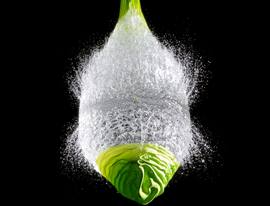 When working on proteins, your sample biological materials should first be homogenized to ensure proper solubilization and extraction. This can be a challenge if you are trying to extract plant proteins because their tissues contain significant amounts of proteases, phosphatases and glycosidases which can interfere with the results. In addition, not all biological materials require the same technique so you should really be careful when choosing the technique that you would use.
When working on proteins, your sample biological materials should first be homogenized to ensure proper solubilization and extraction. This can be a challenge if you are trying to extract plant proteins because their tissues contain significant amounts of proteases, phosphatases and glycosidases which can interfere with the results. In addition, not all biological materials require the same technique so you should really be careful when choosing the technique that you would use.
Generally, cell disruption protocols can be divided into two main categories – the gentle cell disruption protocols (temperature treatments and osmotic and chemical lysis) and the harsher ones (mechanical, ultrasonic and pressure homogenization). So, which technique should you use to increase your chances of success? To help you choose the most appropriate technique that will yield the optimum results, here are some of the most widely used cell disruption techniques and their applications.
5 Common Cell Disruption Methods
Mechanical Homogenization
This method relies on the use of handheld or motorized devices with rotating blades in breaking down and extracting proteins. The tangential force applied by the blades to the sample facilitates the disruption of the cell wall and subsequent homogenization of the sample. This method is most suitable when working with soft, solid tissues.
The Dounce and the Potter- Elvehjem homogenizers are some of the most classic examples of handheld tissue grinders while blenders such as the Waring and the Polytron are some of the most commonly used motorized homogenizing tools in the laboratory.
Ultrasonic Homogenization
In this method, an acoustic transducer is used to deliver high-frequency sound waves in the liquid cell suspension. The mechanical energy produced in the process facilitates the formation of microscopic bubbles which then cause shock waves to radiate throughout the sample once they implode. Keep the sample immersed in an ice bath and make sure you only apply short bursts of ultrasonic waves to avoid overheating. This method can be used to homogenize small batches (less than 100 ml) of cell, bacteria, spore and finely diced tissue samples.
Pressure Homogenization
In high-pressure homogenization, samples are forced through a narrow space while applying pressure into the sample. Extracting proteins in higher pressures (40 and 80 MPa) can significantly increase or even double the protein recovery rate since the process effectively increases the availability of the enzyme to the binding sites. High-pressure homogenizers are also scalable so they can easily adapt to different sample sizes and accommodate increased demand.
Temperature Treatments
Cell lysis can also be accomplished through temperature treatments (i.e. freeze-thaw and/or heat treatments). In the freeze-thaw method, the sample suspension is subjected to multiple cycles of freezing in dry ice or ethanol bath and then thawing it at room temperature or 37oC. Since the cells swell as ice crystals form during the freezing process and contract during thawing, the cell walls will ultimately give in and break as the sample is subjected repeatedly to the process.
Heat can likewise be used in cell lysis since subjecting protein samples to high temperatures improve their solubility and increases their emulsifying property. The only problem is that heating protein solutions may make extraction more difficult, according to a study conducted by Tang, et al. and published in the Journal of Agricultural and Food Chemistry in 2002.
Osmotic and Chemical Lysis
Cell lysis can also be facilitated by suspending the protein sample in hypotonic solution (osmotic lysis) and/or by using chemicals (e.g. antibiotics, chelating agents, detergents and/or solvents) that can interact with certain components of the cell wall and allow proteins to leak through the cell wall. These methods are ideally used for bacteria, yeast and fungi samples.






